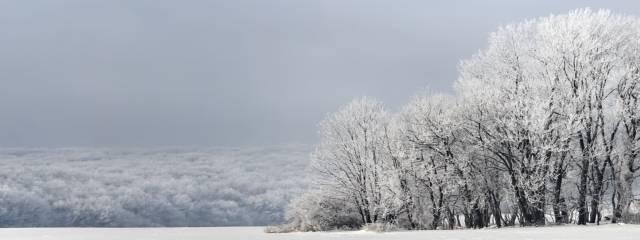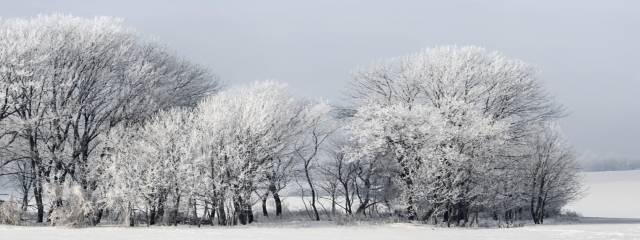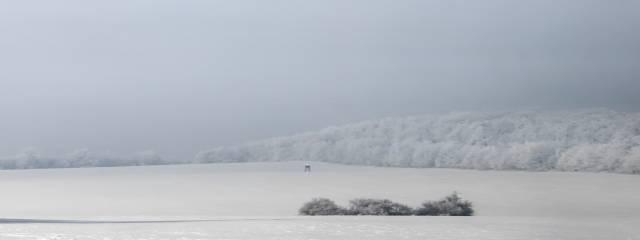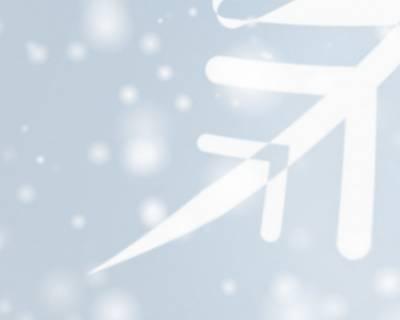| title | Asarum Liver and Kidney Toxicity Report |
|---|
| source | Committee on Traditional Chinese Medicine, Department of Health, Executive Yuan |
|---|
Dutohmanspipe Fruit Aristolochic acid is a common component contained in plants of the Dutohmanspipe Fruit family and the genus Dutohmanspipe Fruit. It is the first nitro compound discovered in the plant kingdom. In 1851, Frichhinger first proposed it from Aristolochia clematitis. In 1956, Pailer determined it Structural formula, Kupchan successfully synthesized it chemically in 1965. There are 6 kinds of the most basic Dutohmanspipe Fruit acids in nature, namely Dutohmanspipe Fruit acids I, II, IIIa, III, IVa, and IV. Their molecular formulas are C17 H11O7N, C16H9O6N, C 15H8O7N, C16
Near Brussels, the capital of Belgium, the sharp increase in the number of interstitial nephritis (interstitial nephritis) after 1992 prompted them to conduct an epidemiological survey in the area. After excluding those who had taken nephrotoxic drugs (such as antipyretics) Except for patients with renal failure who suffer from analgesics, diuretics, nonsteroidal anti-inflammatory drugs) or specific constitution (idiopathic), almost all other patients have normal renal function before taking this weight loss prescription; in fact, many patients have normal renal function before taking this weight loss prescription. People who have taken this weight loss prescription for many years have had no health problems. However, since the prescription was changed in 1990 and Fourstamen Stephania Root and Officinal Magnolia Bark were added, cases of renal failure have occurred one after another. It was later confirmed that the kidney disease was caused by Dutohmanspipe Fruit acid. (3).
After the Chinese herbal medicine kidney disease incident, the Belgian Ministry of Health estimated that at least 10,000 people had taken sour herbal medicine containing Dutohmanspipe Fruit in the early 1990s, so it issued a document on March 14, 2000 to advise everyone who had taken Chinese materia medica in the past 10 years. People taking the drug should check their kidney function and ask their physician and pharmacist to cooperate. The UK announced a ban on the sale and use of Chinese materia medica containing Dutohmanspipe Fruit acid on July 29, 1999, based on two cases of Chinese herbal medicine kidney disease requiring hemodialysis or kidney transplantation after taking it for the treatment of eczema. Herbal-like. On June 9, 2000, the U.S. Drug and Food Administration (FDA) ordered to stop the import, manufacture and sale of raw materials known to contain and suspected of containing Dutohmanspipe Fruit acid, even though "no reports of similar adverse events have been received to date". and finished product (4). There are more than 70 species of plants suspected of containing Dutohmanspipe Fruit acid, involving all species of Dutohmanspipe Fruit, Manchurian Wildginger, japanese honeysuckle stem, Iogo, southern fangchi root, kudzu, clematis, and akebia stem genus and Common Aucklandia Root genus, some of which are only slightly related by name and do not contain Dutohmanspipe Fruit acid at all. The WHO also issued a similar warning in its drug communication on November 2, 2000 (5). Spain, Austria, Egypt, Malaysia, the Philippines, Japan and other countries have followed suit, announcing a ban on its use, or requiring doctors to use it when prescribing. Remove the above ingredients. What's more, even Officinal Magnolia Bark, which once appeared in Belgian weight loss prescriptions, has also been banned. From the ban on herbs containing Dutohmanspipe Fruit acid to the complete ban on Chinese materia medica. Therefore, many scholars have suggested changing the name of Chinese herbal medicine nephropathy (CHN) to Dutohmanspipe Fruit acid nephropathy (AAN), because Chinese herbal medicine nephropathy often causes people to doubt that Chinese herbal medicine can cause nephropathy (6 -7).Since the Chinese Medicine Committee of the Department of Health proposed: "All Chinese materia medica factories that have licensed Chinese materia medica preparations containing Dutohmanspipe Fruit acid ingredients should put warnings on labels, instructions and outer boxes - long-term continuous Taking it may cause side effects such as renal failure; and if the drug license contains Dutohmanspipe Fruit acid, its category will be changed to a drug prescribed by a physician." Then the announcement on November 4, 1992 banned five Chinese materia medica materials containing Dutohmanspipe Fruit acid, including Fourstamen Stephania Root, slender dutchman's pipe root, manshurian dutchman's pipe stem, Dutohmanspipe Fruit, and dutchmanspipe vine. It was prohibited to manufacture, import, and and cancel its drug license (9-10). It is prohibited to sell Dutohmanspipe Fruit in the country. Fourstamen Stephania Root (A. fangchi), manshurian dutchman's pipe stem (A. manshuriensis), Dutohmanspipe Fruit (A. contorta or A. debilis), and dutchmanspipe vine are the above-ground stem parts. , slender dutchman's pipe root is its dry root.
Plants of the genus Manchurian Wildginger only contain trace amounts of Dutohmanspipe Fruit acid. Whether this content is sufficient to cause harm must be further discussed. The Chinese Medicine Committee of the Department of Health stipulated in 2004 (Department of Medicine No. 0930000756) (9-11) Relevant inspection specifications and methods of Manchurian Wildginger Chinese materia medica. The medicinal part of Manchurian Wildginger Chinese materia medica is changed from the whole plant to the root, and the inspection specifications and methods of this announcement are passed (refer to the 14th edition of the Japanese Pharmacopoeia) Only after stipulation) can it be manufactured and adjusted. In addition, preparations containing Manchurian Wildginger must be manufactured in a decocted with water cooking method; the finished product can only be sold after passing the HPLC inspection method established in the factory.
Regarding the study on the acid content of Dutohmanspipe Fruit in Manchurian Wildginger, Wu Tianshang (12) and Zhou (13) used the atmospheric pressure chemical ionization liquid phase mass spectrometry system method [LC/(+)APCI/MS/MS] to detect nine Dutohmanspipe Fruit acid content in traditional Manchurian Wildginger genus Chinese materia medica materials (A. crispulatum, A. debils, A.forbesii, A. heterotropoides, A.himalaicum, A. ichangense, A. maximum, A. sieboldii), found that this Manchurian Wildginger all contain Dutohmanspipe Fruit acid I, with the content ranging from 3.3 ng/mg (A. sieboldii) to 3376.9 ng/mg (A. crispulatum Manchurian Wildginger). Dutohmanspipe Fruit acid II is not detected at all. Manchurian Wildginger Dutohmanspipe Fruit The acid content ranges from 3.3-105.9 µg/g. In 2003, Japanese scholar Tomoko Kawamura (see Wu Tianshang (12)) and others studied the Dutohmanspipe Fruit contained in 52 species of Dutohmanspipe Fruit family plants (48 species of the genus Manchurian Wildginger, 3 species of the genus Dutohmanspipe Fruit, and 1 species of the genus Callus). Acids 1 and 1I were analyzed by HPLC. In addition to Dutohmanspipe Fruit acids 1 and 11, which were found in plants of the genus Dutohmanspipe Fruit, Dutohmanspipe Fruit acid 1 was also detected in 38 plants of the genus Manchurian Wildginger, including 4 species of the genus Manchurian Wildginger. The plant also detected Dutohmanspipe Fruit acid 1 and 11, and the content in the leaves was higher than in the roots. Others include Yingxiang (14) (2003) who used HPLC to detect Dutohmanspipe Fruit acid in medicinal materials such as Manchurian Wildginger and Chinese patent drug. The content of Dutohmanspipe Fruit acid in Manchurian Wildginger was 0.0014%. Xie Zhaoming (15) (2003) used HPLC method to determine that the acid content of Dutohmanspipe Fruit in three types of Manchurian Wildginger: North Manchurian Wildginger, Seoul Manchurian Wildginger and Hua Manchurian Wildginger were 9.8, 6.3 and 11.4 μg/g respectively. Zhan Shun'an used liquid phase electrolysis The Manchurian Wildginger content was measured using a negative ion mass spectrometer (LC-ES-ITMS) with a detection limit of AAI 0.012µg/ml and AAII 0.15µg/ml. Others include (30) Xie Zhaoming (15), (31) Lin Zhaogeng (16), Jiang Xu (17), Guan Wenqiu (18), Gao Jun (19), Ma Guoxiu (20), Lu Fenling (21)
Manchurian Wildginger Medicinal Material Risk Assessment
1.Daily intake
The dose used by Manchurian Wildginger is very different. The dose used by Manchurian Wildginger is evaluated by @RISK 4.5 as (0.18, 28.207, 95.871), and the most likely dose is 28.207g.
2. Manchurian Wildginger Whole Plant Dutohmanspipe Fruit Acid Content
Bring the table content data into the analysis tool @RISK 4.5 risk analysis software for simulation. The mode is Risk Triang Mode. The most likely values (minimum, most likely, maximum) are (4.37, 16.67, 54.261) mg/g. .
3.Risk assessment
Dutohmanspipe Fruit acid has carried out hazard identification procedures for carcinogenic toxicity and non-carcinogenic toxicity based on the above information. It is a carcinogenic substance (Group 1, Group 2A) (Note: Herbal remedies containing plant species of the genus Aristolochia are carcinogenic to humans (Group 1 ). Naturally occurring mixtures of aristolochic acids are probably carcinogenic to humans (Group 2A). However, according to the database, there is no carcinogenic slope data, nor is there any reference dose for adverse reactions. The TD50 (mg/kg/day) found only in the database TCPD: The Carcinogenic Potency Database is 0.0141.
HIA = (C×IFR×Tr×Ab)/TD50
Target hazard quotient: [(daily intake per person per kilogram) × (measured toxin contamination concentration calculated by @risk) × (decoction rate) × (absorption rate) ] / acute RfD
Dutohmanspipe Fruit The acid carcinogenic probability is included in the target hazard quotient. The decoction rate and absorption rate are set as 1. The calculated HIA is 0.051, which is less than 1. Therefore, chronic health effects are not expected to occur.
- National Pharmacopoeia Commission of the People's Republic of China: Pharmacopoeia Department of the People's Republic of China (2005), Chemical Industry Press (Simple Chinese).
- Ding Linsheng, Lou Fengchang: Chemical composition of Dutohmanspipe Fruit genus (Aristolochia) plants. Chinese herbal medicine 1983; 14(9): 40-48.
- Vanherweghem JL, Depierreux M, Tielemans C, Abramowicz D, Dratwa M, Jadoul M, Richard C, Vandervelde D, Verbeelen D, Vanhaelen-Fastre R. Vanhaelen M. Rapidly progressive interstitial renal fibrosis in young women: association with slimming regimen including Chinese herbs. Lancet 1993; 341: 387-391.
- FDA/CFSAN. Aristolochic Acid–Letter to Health Care Professionals, FDA Concerned About Botanical Products, Including Dietary Supplements, Containing Aristolochic Acid. U.S. Food and Drug Administration Center for Food Safety and Applied Nutrition office of Nutritional Products, Labeling, and Dietary Supplements,.2000;May 31,.
- WHO. Aristolochic acid-warning concerning interstitial renal fibrosis. Pharmaceutical news letter.2000; 2
- Zhang Xiaoming, Zheng Farei: Kidney damage caused by Dutohmanspipe Fruit acid. Foreign Journal of Medical Urology 2000; 20(3): 101-103.
- Hu Shilin, Xu Youling: Looking at the internationalization of Chinese materia medica from the Dutohmanspipe Fruit acid problem. World Sci Technol 2001; 3(2): 5-8.
- Ding Linsheng, Lou Fengchang: Chemical composition of Dutohmanspipe Fruit genus (Aristolochia) plants. Chinese herbal medicine 1983; 14(9): 40-48.
- Department of Health, Executive Yuan. Announcement No. 0920002350 was issued on November 4, 1992.
- Department of Health, Executive Yuan. Announcement No. 0920002349 was issued on November 4, 1992.
- Department of Health, Executive Yuan. Announcement No. 0930000756 was issued on November 4, 1992.
- Wu Tianshang, Lin Zhaogeng: Research and review of Dutohmanspipe Fruit, National Institute of Chinese Medicine 1995, pp.175-178
- Ting-Ting Jong , Maw-Rong Lee , Shun-Sheng Hsiao , Jar-Lung Hsai ,Tian-Shung Wu , Shu Tuan Chiang , Shao-Qing Cai Analysis of aristolochic acid in nine sources of Xixin, atraditional Chinese medicine, by liquid chromatography/atmospheric pressure chemical ionization/tandem mass Spectrometry Journal of Pharmaceutical and Biomedical Analysis 33 (2003) 831-837
- Ying Qixiang, Yuan Changlu, Qu Xianxi: Determination of the acid content of 11 kinds of Chinese materia medica materials and 3 kinds of Chinese patent drug Dutohmanspipe Fruit. Journal of Traditional Chinese Medicine 2003;30(5):404.
- Xie Zhaoming, Li Shunxiang, Liao Hancheng: Determination of acid A content in Manchurian Wildginger Dutohmanspipe Fruit by HPLC method. Central and Southern Pharmacy 2003, 1(3):164
- Lin Zhaogeng: A survey of relevant literature on nephropathy in Chinese materia medica and Chinese herbal medicine containing Dutohmanspipe Fruit acid, CCMP-92-CT-06, Chinese medicine committee plan of the Department of Health, Executive Yuan, pp.71.
- Jiang Xu, Wang Zhimin, You Lishuang, Dai Liping, Ding Guangzhi: RP2HPLC determination of Dutohmanspipe Fruit acid A content in slender dutchman's pipe root and Manchurian Wildginger from different origins. China Journal of Chinese Materia Medica 2004;29(5).
- Guan Wenqiu, Li Xiaomeng, Xiao Jiashang: Determination of Dutohmanspipe Fruit acid content in Manchurian Wildginger medicinal materials and their preparations by reversible high performance liquid chromatography. Chinese Medicine and Clinic 2005;5(4):283-284.
- Gao Jun: Determination of Dutohmanspipe Fruit acid A content in Huaxin by high performance liquid chromatography.
- Hao Xuliang, Ni Yan, Li Xianrong: HPLC determination of Dutohmanspipe Fruit acid content in Manchurian Wildginger medicinal materials from different origins and varieties Chinese patent drug. Chinese Traditional PatentMedicine 2006;28(8).
- Ma Guoxiu, Yu Yan, Zhang Lide, Sun Kefeng, Chen Yingping, Liu Guifang: Determination of acid A content in the whole plant and roots of Northern Manchurian Wildginger Dutohmanspipe Fruit and experimental study on acute toxicity in mice. Chinese medicine pharmacies CH INESE ARCH IVES O F TRAD ITIONAL CH INESE MED IC INE 2006; 24 (6).
- Lu Fenling, Qin Ling, Huang Kunsen, Lin Xiuzhen, Lin Yazi, Zhang Huaxuan, Zheng Shujing, Huang Qiuyu, Huang Chengyu, Lin Zhehui: Research on the method of identifying preparations containing Manchurian Wildginger Chinese materia medica using high performance liquid chromatography. Annual Research Report of the Food and Drug Administration Ann Rept. BFDA Taiwan R.O.C. 2005;23:154-161.













